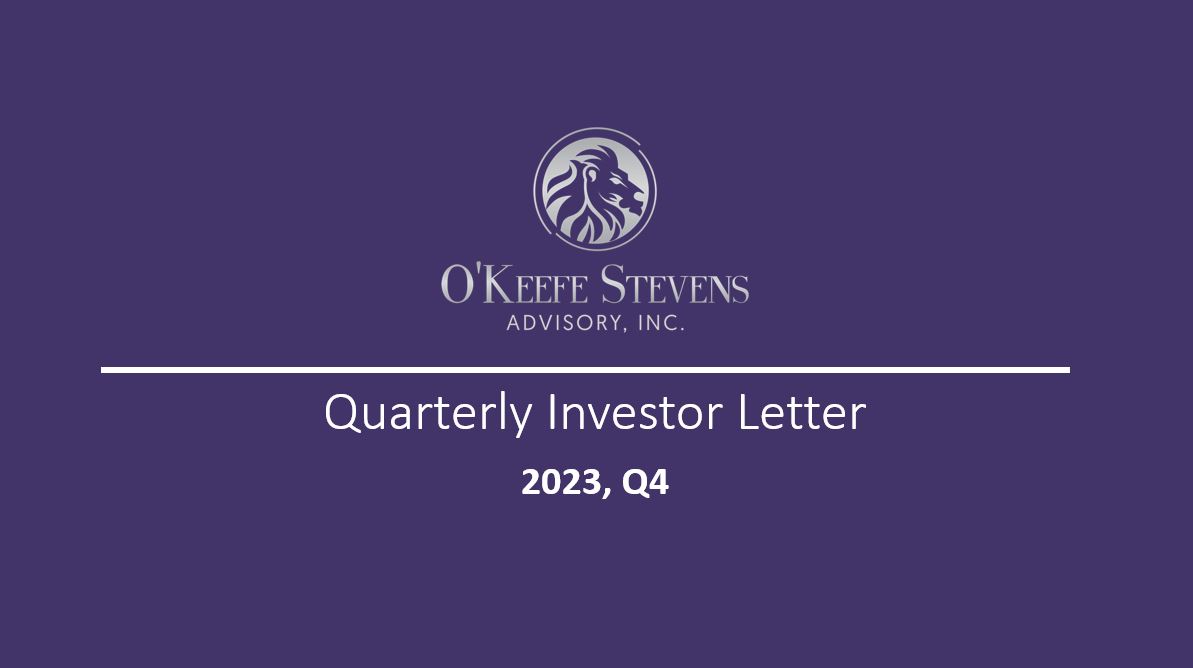January 24th, 2024
2023 was an eventful year, with our largest position, Nvidia (NVDA), appreciating over 200% as AI
became mainstream. Despite cautious commentaries from analysts and management, the market,
especially in tech, delivered an outstanding year. Listening to dozens of conference calls with the
same underlying theme shaped what we expected to be a below-average return year. Setting a low bar
is a recipe for delivering better-than-feared results.
In my Q4 2022, l made three predictions:
One of our top 25 holdings gets acquired
TSLA is a sub $200B market cap by the end of 2023
Crypto, the final blow
Results
One of our top 25 holdings gets acquired. Grade: A-
On August 28th, Hersha Hospitality announced they are getting acquired by KSL Capital Partners for
$10/share. We discussed the rationale for the transaction in our Q3 letter. While this technically
was a top 25 holding, it was towards the bottom of the list and was not a stock we thought was up
for sale.
TSLA is a sub $200B market cap by the end of 2023. Grade: D
TSLA performed contrary to expectations, appreciating approximately 100% in 2023 and ending the
year with an $880 billion market cap. We were “just a bit outside,” but I’m not convinced our
reasoning was flawed.
The typical strong correlation between earnings estimates and stock prices did not hold for TSLA
during the year. Positive revisions suggest a company outperformed expectations, resulting in a
higher price/valuation. Negative revisions suggested estimates were too high, and the stock should
decline to meet a weaker outlook.
In 2023, Wall Street expected TSLA to generate $5.53 in earnings per share (EPS) for the year,
$7.07 in 2024, and $7.93 in 2025. At the end of the year, 2023 and 2024 estimates are down almost
50%! While 2025 is down just 35%.
At the beginning of the year, Tesla was trading at 22x projected 2023 EPS (using $5.53 as the
estimate). However, assuming $3.06 is correct, it actually traded at 40x. 22x for a CAR company is
not cheap, though given many of the advantages Tesla has in the EV space, it wasn’t an outrageous
valuation, just one where we thought estimates were far too high. In 2023, TSLA’s stock increased
102%, while estimates dropped 45%! Down is up, and up is down. Entering 2024, the stock now trades
for… 65x 2024E. And guess what… it wouldn’t surprise us one iota if 2024 EPS is lower than 2023! This CAR company is trading at 82x (or higher) EPS. Good luck to those involved; we will be on the sidelines.
TSLA EPS Earnings Revisions
1-Jan 31-Dec % Change 2023 5.53 3.06 -45%
2024 7.07 3.81 -46%
2025 7.93 5.12
Crypto becomes far less relevant. Grade: B-
The resilience of a worthless item is incredible. During the year, FTX, the largest crypto
exchange, went out of business after the second coming, Sam Bankman Fraud, stole billions of
speculator’s capital. In addition, the largest crypto bank, Silvergate, had a bank run and was
seized by the FDIC. We still have not found a credible use case for the coins. Until this is the
case, we will stick with USD.
While the prediction results are unsatisfactory, if we said, TSLA 2024 earnings estimates are down
46%. You’d likely think the stock is not where it is today. Furthermore, if the largest crypto
exchange and the most prominent crypto bank went under; you’d predict Bitcoin is at $10,000, not
$42,000. While the results are poor, the rationales weren’t far off. In this business, results can
outweigh process in the short run; in the long run, process dictates results.
2024 Predictions
Top picks for 2024 – Five Point Holdings (FPH) and Aercap (AER)
Both situations are similar, with significant overhangs resolved in late 2023. Five Point had a
debt problem, with $625m coming due in 2025, with no credible path to repay or refinance. In
addition, former CEO Emile Haddad ran the business as a personal cash cow. Since Dan Hedigan took
over, the business has run lean, and cash generation is prioritized. In December, they announced a
debt exchange offering, exchanging the 2025 notes for 2027 notes with a higher interest rate while
repaying ~$100m of the balance. These additional years, combined with laser focus from management,
set this company up for success in 2024 and beyond.
Aercap acquired GECAS in 2021 for cash and stock. GE consistently sold their AER shares, creating
heavy selling pressure. In addition, Aercaps planes on lease to Russian airlines were written off
in 2022. Thus far, they received $1.2B in insurance recoverables, and ~$2B remains outstanding.
Insurance proceeds provide substantial ammunition to aggressively repurchase shares. Ongoing engine
and airplane production issues created a “hard market” for secondary transactions. Aercap
continually sells planes and engines for over 1.2x carrying value, using proceeds to repurchase
stock at or below book value. Note- at a couple of turns of leverage, this ROE is closer to
70%-80%. Repurchasing stock trading at 90% of BV is almost a 100% delta between private market
transactions and the stock. That is one hell of a trade! With airlines scrambling for capacity,
Aercap holds substantial bargaining power, driving higher rates and longer terms. Business is
flying high.
Another top 25 holdings are acquired during the year.
We maintain several holdings in areas ripe for consolidation. Donnelley Financial (DFIN) and Lazard
(LAZ) top the list. Both offer complementary services to larger companies and have synergistic
opportunities.
Top performing Indicie for 2024 – Russell 2000
Small caps have underperformed the S&P 500 in 8 of the last 12 years. While we recognize that
~40% of the index is unprofitable, we find far more opportunities in this area than large-caps.
With a cheaper starting valuation and the expectation of rates coming down, we believe small caps
will have their moment in the sun this year.
Best Performers Return
Nvidia (NVDA) 234% Warrior Met Coal (HCC) 79% BGC Group (BGC) 66%
Worst Performers Return Graftech (EAF) -73% Green First Forest (ICLTF) -41%
Reflecting on the losers, what went wrong, and what we can learn.
Graftech (EAF) – Unlucky, poor industry dynamics, and the largest shareholder, Brookfield selling.
Upon making our initial investment, we were aware of the potential risks and volatility; we never
thought a $2 stock price was something to worry about. As a low-cost producer, the current price
implies competitors will likely go bankrupt. Instead, Graftech is the one ceding share. The Mexican
plant shutdown had a far more significant impact than initially thought.
Graftech is heavily exposed to the European economy, which has lagged in its recovery. With
Long-term contracts ending and $9,000/mt graphite electrodes declining to $5,000+, this high
operating leverage business was set for a step down in earnings. Furthermore, an estimated
utilization rate of 43% for the year dramatically increases the COGS/mt. The major bomb in the
third quarter was the idling of their needle coke facility, Seadrift. Seadrift is the crown jewel
of the company and the primary reason Graftech has an advantageous position in the industry.
The initial thesis was not predicated on one factor. The continued shift towards electric arc
furnaces should drive increased demand for Graphite Electrodes. With limited new supply, which
would cost $10,000/mt to bring online, Graftech was trading at replacement cost. This cost is
likely even higher today due to inflationary pressures seen recently. 2nd, Seadrift allows Graftech
to internally produce needle coke, the primary raw material to produce graphite electrodes. In
addition to its use in graphite electrodes, needle coke is used in the anodes of lithium-ion
batteries of electric vehicle batteries. As demand for EVs increased, needle coke supply would
tighten, resulting in higher prices. Graphite electrodes typically trade at a spread over needle
coke, ranging from $2,500 to $3,500. While competitors price graphite electrodes off higher needle
prices, Graftech’s costs remain stable, allowing them to price at the spot rate competitors
charged. Graftech margins and profits would dramatically increase, and debt could be repaid with
this cash, further de-risking the balance sheet.
We invested in mid-2021, expecting a stable market, which did not materialize. Graphite Electrode
pricing was down substantially as demand fell off a cliff due to COVID-19. However, prices
rebounded nicely at the start of 2022. Spot prices were up ~40% y/y in Q1 2022 to $6,050; while we
weren’t expecting that to continue, we believed there was still substantial room for prices to
increase. Throughout 2022, prices were stable as inventory rationalized due to the weak European
economy. Today, prices are in the low $ 5,000’s. While customer inventory is normalized, demand is
sluggish, pressuring ectrode prices. HEG Limited, a Graftech competitor, saw its stock rise 85% in
2023 compared to -54% for EAF. Earnings declined from $1.47 In 2022 to an estimated -$0.28, while
HEG’s declined from $113.86 to $110.29. The stark difference is the opposite we would have
envisioned.
Today, Graftech is contending with an excess supply of electric vehicles, pressuring needle coke
demand. Graftech refinanced their 2025 note to 2029, putting them in a much stronger position than they would otherwise be. All $925m of debt is due in 2029. Today, the stock is priced as if
they have a liquidity issue and business will never recover.
Liquidity – $173m of cash on hand with ~$100m of excess inventory to work down. No maturities are
due until 2029. Analysts estimate EAF will lose money in 2024 but recover to be FCF positive in 2025.
Given the lack of near-term maturities, Graftech is positioned to weather the downturn.
Business – The issue of ZERO clarity on the go-forward business is the central issue. While we
believe they could generate $0.50 in EPS in 2025, the range of outcomes is likely between $0.00 and
$1.00+. The recent issues make this a show-me story. We continue to maintain the position for the
following reasons. 1. BAM selling overhang is almost over, as they own 12.5% after
distributing/selling shares to minority investors in December. 2. JV with a battery maker could
diversify revenue/earnings stream 3. Trading well below replacement cost 4. Lean inventory in
Europe could lead to higher pricing should demand recover 5. An estimated 170Mt/year of EAF
capacity additions by 2030, translating to ~200Kt/year of incremental electrode demand. ~13% slated
for NA and ~33% each for the EU and the Middle East.
Lessons – Significant selling by a major shareholder creates a substantial overhang on the stock.
We’ve seen this at FPH, BKRIF, AER, and WBD. The added stock supply mutes potential stock
appreciation regardless of how well a business performs. 2. In Q2 2021, when Brookfield sold their
stake to less than 30%, management received an $88 million bonus. It was their parting gift to stay
on post-IPO. Still, to this day, we have not found where this clause was in any proxy or filing – a
major red flag that we should have considered more. Adverse events often get swept under the rug
when business is going well. $88m would go a long way today. Be more critical of management
actions. As an aside, the more companies and management teams observed, many are way over their
head, are there for a paycheck, or think they’re smarter than everyone else. 3. The unthinkable can
occur. 4. Healthy balance sheets provide downside protection. The best defense is a good offense;
right now, Graftech’s defense has been on the field for a long time.
Countless companies took on debt to repurchase shares, now wish they had never done so, especially
after the move in rates. In hindsight, Graftech would be in a far better position had they used FCF
to pay off debt instead of $625m in buybacks and $150m of dividends (excluding the special dividend
in 2018). Our initial fair value target was $24-$28 (no, a decimal was not forgotten). We may exit
the position if the business does not recover by Q4 2024. One can only hold on for so long before
admitting this may not be in their circle of competence.
Greenfirst Forest Products (GFP.TO, ICLTF) – Greenfirst is far different than Graftech. While the
stock was down 37% in 2023, the relative performance spread versus peers was far less, though still
very notable. While we experienced a permanent capital impairment with Graftech, we are unconvinced
this is the case with Greenfirst. Management has done everything expected, including selling their
Quebec mills for a healthy price, selling non-core land, improving operations, and lowering
breakeven prices at both lumber and paper mills. The balance sheet is healthy, with ~$15m in net
debt.
Greenfirst has ~$80m in duties on deposit with the US government, which, at some point, will be
resolved. While waiting for this refund (or at least a portion), the 20% duty rate paid since the
mill acquisition declined to ~8% in August 2023. This 12% savings flows directly to the bottom
line.
While Graftech’s management pulled a fast one on minority shareholders, Greenfirst’s management and
board are heavily aligned with shareholders. Many invested their wealth into the business. Share ownership (190m shares outstanding): Paul Rivett (Chairman)- 5.7m, Rick Doman (Former CEO, Current BoD) – 6.7m, Mike Mitchell (BoD) – 1.7m, Larry Swets (BoD) – 5.3m. With ownership aligned and actions taken thus far in line with expectations, I’m willing to believe they will maximize shareholder/personal value. We believe this will be a $3 takeout, and we expect the timing to be in the next few years.
Lessons – 1. Purchasing commodity companies while profits are at or near the peak is often the time
to sell, not buy. We made this mistake with both Graftech and Greenfirst. 2. Timelines are longer
than expected, and transactions rarely close ahead of schedule. We expected 1-2 years to monetize
Greenfirst’s on and off-balance sheet assets. 3. Knowing the company inside and out is crucial to
sticking with stocks in a significant drawdown, especially in illiquid names.
Commodity investing is far more challenging than buying and holding durable, compounding
businesses. It’s plausible we are better off sticking with the latter. Estimates and results for
commodity businesses have far wider ranges of outcomes (both positive and negative) compared to a
traditional business. The inability to materially differentiate products leaves them heavily
reliant on competitors making sound decisions.
Warrior Met Coal (HCC) is the other commodity producer in the portfolio, and what a year 2023 was.
It’s startling how two companies (EAF and HCC) having the same end market (steel)(EAF – electric
arc furnace production)(HCC – blast oxygen furnace) could see their product prices and demand
drivers move in opposite directions. If anything, the continued switch toward electric arc furnaces
suggested that Graftech had more tailwinds over the past several years. Yet the business
performance has been just the opposite. These investments take up substantial time and continually
search for reasons why the stocks move lower daily, but also a mental drain; watching a stock move
lower and lower wears one down over time.
New Position
LL Flooring (LL) – We initiated and closed our position in LL Flooring (LL) during the quarter.
This is an unusually short holding period for us, though it was the intention when we initiated the
position. LL received an all-cash takeover offer of $5.85 from Live Ventures (LIVE). LL was and
continues to be in a precarious position with a troubled balance sheet and a market share donor.
The offer acted as a lifeline that we believed management could not deny, as the business is headed
for bankruptcy, barring a dramatic rebound in repair and remodel spend. After writing a letter to
the board and speaking with Charles Tyson (CEO), management is unwilling to “fire” themselves,
regardless of whether it’s in the best interest of shareholders.
Management went on about how they will weather the downturn and invest in the future, even when
there isn’t one. On the one hand, we were unlucky to establish the position shortly before the
Bleeker Street short report. However, we were able to break even on the trade.
Portfolio Top 5 Holdings
One of the fundamental tenets we pride ourselves on is acting differently than the market. We
suspect no other actively managed fund owns the five positions noted above (NVDA, BGC, HCC, EAF,
ICLTF). These market caps range from under $200m to over $1T. The unconstrained nature and
willingness to find bargains anywhere, we believe, gives us an edge over time. Our NVDA position is
like a boxer that will not stay down. We trim it, only to have the stock increase daily, making it
a substantial position once again (a pretty good problem to have). At the end of
the quarter, our top 5 positions were NVDA, QCOM, HCC, AMGN, and DFIN.
Regards,
Dominick D’Angelo, CFA Dominick@okeefestevens.com 585-497-9878
Disclaimer
This document is for informational purposes only. O’Keefe Stevens Advisory is not providing any investment recommendations with the publishing of this document, and no firm performance data is included in this document.



No responses yet